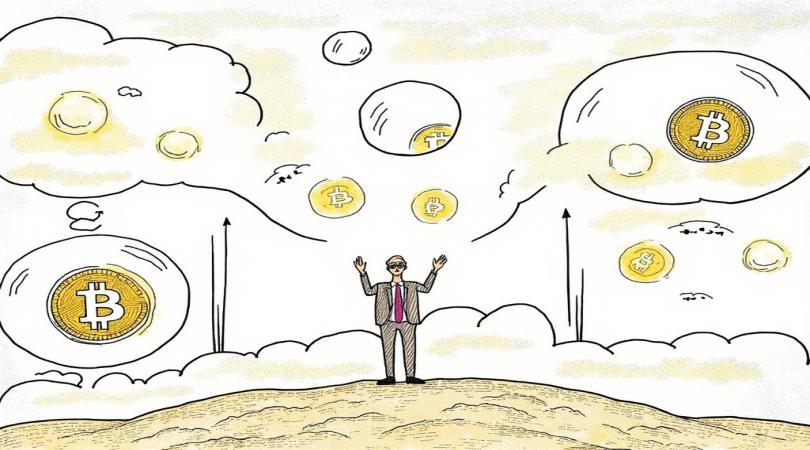

 20 Aug
20 Aug
Bitcoin has captivated the world since its inception in 2009, often characterized by rapid price surges and significant volatility. As the largest and most recognized cryptocurrency, Bitcoin’s price movements frequently trigger debates about its true value and sustainability. Many analysts and enthusiasts hail it as a revolutionary asset class, while skeptics warn of a dangerous bubble poised to burst. So, is Bitcoin truly in a bubble? In this blog post, we’ll explore the arguments for and against this notion, examining historical context, market behavior, and future implications.
A financial bubble occurs when the price of an asset significantly exceeds its intrinsic value, driven by exuberant market behavior rather than fundamental factors. Bubbles are typically characterized by:
Historically, bubbles have formed around various assets, including the dot-com boom and the housing market. Understanding Bitcoin’s current status requires a nuanced look at its price behavior and the forces driving it.
Bitcoin began trading in 2010 at mere cents and experienced its first significant price spike in 2011, reaching $31 before crashing down to around $2. This initial bubble, characterized by speculation and media hype, set the stage for future volatility.
In late 2013, Bitcoin surged to over $1,100, driven by increasing interest from investors and media coverage. However, this was followed by a significant decline, and by early 2015, Bitcoin was trading around $200. This pattern of boom and bust has become a hallmark of Bitcoin’s price history.
Bitcoin reached nearly $20,000 in December 2017, fueled by unprecedented hype and speculation. The media extensively covered this rise, and retail investors flooded into the market, driven by FOMO. However, by early 2018, Bitcoin’s price plummeted to around $3,200, leading many to label it as a bubble.
Fast forward to late 2020 and early 2021, Bitcoin’s price surged again, breaking past $60,000. Institutional investments from companies like Tesla and Square contributed to this rally, raising questions about whether Bitcoin had matured or if the speculative frenzy had returned. Once more, we witnessed a sharp correction, with Bitcoin experiencing significant price fluctuations throughout 2021 and 2022.
Bitcoin’s price movements often resemble speculative trading rather than investment based on fundamentals. Many retail investors enter the market hoping to capitalize on price increases without understanding the underlying technology or market dynamics. This speculative behavior can lead to unsustainable price levels.
Bitcoin is known for its wild price swings. Such volatility can signal an unhealthy market driven more by emotion and speculation than by stable demand. Frequent and drastic price changes may indicate that investors are not considering Bitcoin’s fundamental value.
As Bitcoin garners more media attention, the fear of missing out drives many to invest irrationally. This creates an environment where price increases are not based on adoption or utility but rather on psychological factors and herd behavior.
Critics argue that Bitcoin lacks intrinsic value, as it does not generate cash flow or provide dividends like traditional assets. This perspective posits that its value is primarily derived from speculation, making it vulnerable to a sudden collapse when sentiment shifts.
Bitcoin has seen significant growth in adoption over the years. From payment processors accepting it as a form of payment to institutional investments and integration into financial products, Bitcoin’s utility is expanding. This increasing adoption suggests that it may have a more stable foundation than previous bubbles.
The underlying blockchain technology is continually evolving, with improvements in scalability, security, and user experience. These advancements may enhance Bitcoin’s utility and value proposition, making it less susceptible to bubble-like behavior.
As central banks around the world engage in extensive monetary policies, including quantitative easing, many investors view Bitcoin as a hedge against inflation. This perception as “digital gold” could lend it a level of stability and intrinsic value that contrasts with typical bubble dynamics.
Increasing participation from institutional investors lends legitimacy to Bitcoin. As major corporations and financial institutions invest, the narrative shifts from a speculative asset to a viable alternative for diversification. This trend can contribute to more stable price behavior over the long term.
So, what does the future hold for Bitcoin? While it’s challenging to predict with certainty, several factors will shape its trajectory:
Government regulations will play a crucial role in determining Bitcoin’s future. Clarity and supportive frameworks could foster growth, while restrictive regulations could stifle innovation and adoption.
Market psychology will continue to influence Bitcoin’s price movements. A sudden shift in sentiment, driven by news or macroeconomic events, could lead to rapid price fluctuations and potentially trigger a correction.
As Bitcoin and its surrounding ecosystem mature, scalability solutions and improved user experiences will be critical. Innovations like the Lightning Network aim to address transaction speed and costs, enhancing Bitcoin’s viability for everyday use.
The growing acceptance of cryptocurrencies in various sectors, including finance, technology, and retail, will influence Bitcoin’s role in the global economy. As more businesses recognize its value, Bitcoin could become integrated into everyday transactions, further stabilizing its price.
The question of whether Bitcoin is in a dangerous bubble remains complex and multifaceted. While there are compelling arguments on both sides, it’s essential to recognize that Bitcoin’s market behavior has historically been characterized by volatility and speculation. However, the increasing adoption, technological advancements, and institutional support suggest that Bitcoin may be moving beyond a purely speculative asset.
Ultimately, the future of Bitcoin will depend on a combination of regulatory clarity, market sentiment, and the evolving landscape of financial technology. While caution is warranted, the potential for Bitcoin to play a significant role in the future of finance is undeniable. Whether it’s a bubble or a legitimate asset class, Bitcoin’s journey is far from over, and its impact on the global economy will continue to unfold in the years to come.